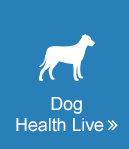Obesity in Dogs
Most dogs are not terribly concerned about their body image or how they’ll look in a bathing suit, but obesity comes with a plethora of health risks that are far more important. Overweight dogs are becoming more and more common due to inactive lifestyles and unhealthy diets. Excessive body fat puts a lot of stress on the dog’s internal organs and joints which can lead to heart or lung problems, insulin-resistant diabetes, and arthritis.
Increasing your dog’s exercise can help them get into better shape. Make time to play with your dogs because fetch, agility training and plain old walks are all great exercise and good for your dog’s mentality. Diets that are made up primarily of wet food will help reduce your dog’s intake of carbs and cheap fillers like corn that are full of calories and do not provide much nutritional benefit.
Obviously the most direct way to help your dog lose weight is to feed less food and treats. Cutting their calorie consumption will help them burn fat. Typically reducing your dog’s food intake by 80% will help you see weight loss results. Increased dietary fiber is good because it will help your dog feel full without adding calories.
Studies
Energy requirements of adult dogs: a meta-analysis.
Abdominal obesity is associated with heart disease in dogs.
Leptin, adiponectin and serotonin levels in lean and obese dogs.
Comparative investigation of body composition in male dogs using CT and body fat analysis software.


